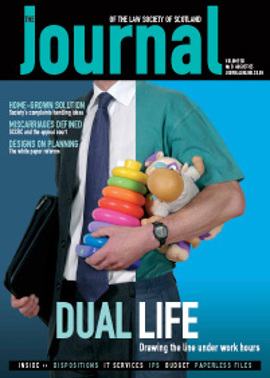Fair picture?

A recent decision of the High Court, Fraser-Woodward v BBC and Brighter Pictures Ltd [2005] EWHC 472 (Ch) gives useful guidance on the scope of the “fair dealing” defence to copyright infringement for those using copyright material without authority for the purpose of criticism or review. The ruling applies a commonsense interpretation and pragmatic application of the defence against the contemporary background of the media’s coverage of celebrities.
Fraser-Woodward (“FW”) commenced proceedings for infringement of copyright following the unauthorised use of their photographs of David and Victoria Beckham in the BBC “Tabloid Tales” documentary. The BBC argued that their use of the photographs fell within the scope of the defence under section 30(1) of the Copyright, Designs and Patents Act 1988, that “fair dealing with a work for the purpose of criticism or review, of that or another work… does not infringe any copyright in the work provided that it is accompanied by a sufficient acknowledgment”. The BBC claimed that the photographs were used to review and criticise the methods used by the tabloid press to obtain stories and their general coverage of celebrity news.
A proper criticism
FW argued that the defence could not apply as the photographs themselves were not being criticised but rather were used to criticise the way in which they had been obtained (allegedly staged with the prior consent of the celebrity), and tabloid coverage of celebrities generally. FW claimed that before the defence could apply, the “another work” referred to in section 30 had to be a tangible copyright work rather than merely ideas or themes.
Mann J held that criticism for the purpose of the defence was not restricted to criticism of the style of work (here the photographs) but could extend to the underlying ideas and themes. Allegations that the photographs were staged did amount to criticism of the photographs themselves as well as the style of journalism. He rejected FW’s argument that use of the photographs for a few seconds on screen was excessive, as any use for the purpose of review did require their display to justify the point being made. It was important to look at the whole programme and the message it would convey to a reasonable viewer – not just small segments of it.
Given the vast sums that are regularly paid for celebrity pictures, FW tried to bolster their case by arguing that any assessment of fairness had to look at the commercial impact the use of the photographs had on their value. FW argued that such use devalued their worth on the market. The court rejected the argument that fleeting use of the photographs was so damaging to their value as to make the use unfair, noting that FW had on rare occasions previously licensed photographs for TV use, which did not sit comfortably with their argument. Although the judgment stressed that criticism and review for commercial purposes can still benefit from the fair dealing defence, it always has to be shown that the copyright material is not being used solely for financial gain. In the case of unofficial programmes and articles on the cult of celebrity, which are ever on the increase, this is likely to be the main stumbling block to successfully relying on the defence in future, i.e. was the use proportionate to the criticism or review or just for gain? For example, it would be difficult to justify the defence where photographs had been used in trailers for the programme to boost ratings.
Sufficient acknowledgment
Having held that the use was for criticism, the next part of the fair dealing defence was to show that sufficient acknowledgment had been given to FW as copyright owner. During the broadcast, some of the photographs were accompanied by FW’s name on screen, or they were referred to as the photographer during discussion of the photograph. However, such acknowledgment was not given for all photographs. The judge adopted a pragmatic approach and decided that sufficient identification was carried over from other acknowledgments during the broadcast and there did not need to be contemporaneous identification for each photograph.
This is an interesting ruling which applies a longstanding defence to modern use of copyright material. It is to be welcomed that the court did not give an unduly restrictive interpretation of what is review or criticism, thus stifling freedom of expression. However, the decision does not give carte blanche to broadcasters to use copyrighted material without proper authorisation. Furthermore, although the use is for criticism or review, the actual use in the context of any programme may not be fair, meaning that the defence of fair dealing does not apply. Therefore best practice for broadcasters must remain to try to obtain copyright clearance as far as possible in advance of any broadcast.
Robert Buchan, IP & Technology, Maclay Murray & Spens
In this issue
- Prosecuting bigotry offences
- A hotter than average July
- Advice for all, but what about justice?
- Calling time
- The anti-avoidance drive
- The best option?
- Radical design
- Miscarriages of justice
- Information technology
- IPS... keeping a watchful eye
- When less means better
- Reality check - not Big Brother
- A clear duty
- Missing a generation
- Does age matter?
- Fair picture?
- Book debts: the final word?
- Website reviews
- Book reviews
- Challenging the sacred cows of conveyancing






